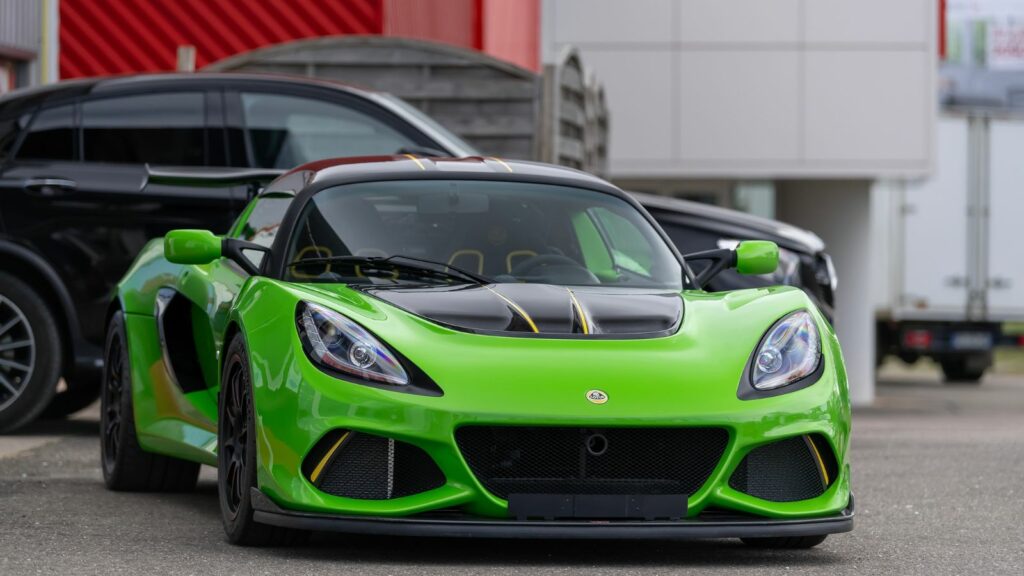Sometimes, automakers throw caution to the wind and ask, “What if we gave it more power?” The result? Cars so powerful they become borderline unmanageable. These 24 vehicles were absolute monsters, packing so much power that they blurred the line between street and race cars. Let’s dive into these tamed beasts that, in many cases, were just too much for their good.
Dodge Challenger SRT Demon (2018)
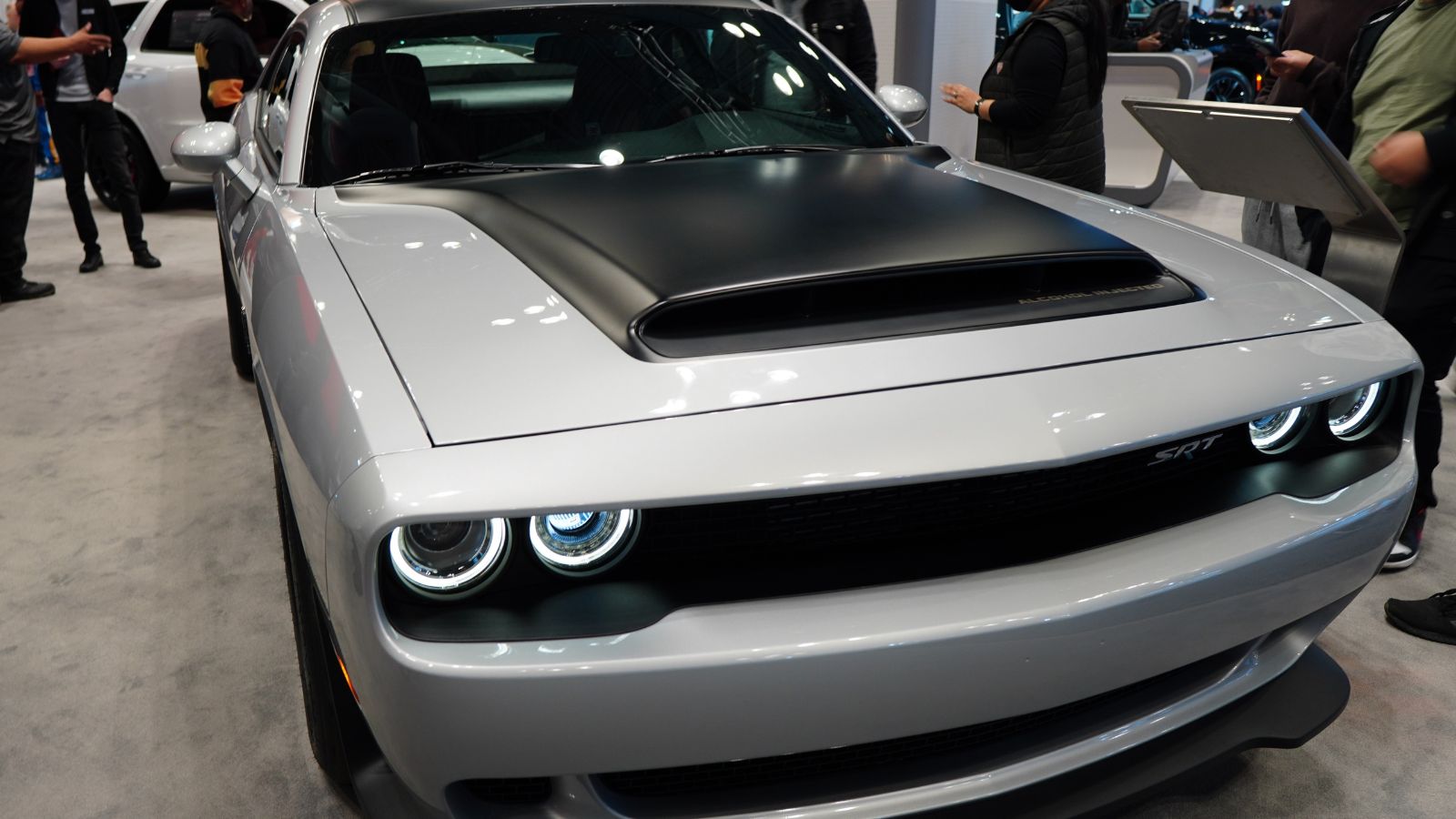
The Dodge Challenger SRT Demon wasn’t just a muscle car but a street-legal dragster. Designed by Dodge’s high-performance team, it featured a supercharged 6.2-liter HEMI V8, producing a jaw-dropping 840 horsepower on race fuel. The interior was stripped down to reduce weight, and the passenger and rear seats were optional, but drivers still got a Uconnect system and an Alcantara-wrapped steering wheel. With a 0-60 mph time of just 2.3 seconds and the ability to lift its front wheels off the ground at launch, the Demon was so wild it was banned from NHRA drag races without a roll cage.
Bugatti Veyron (2005-2015)
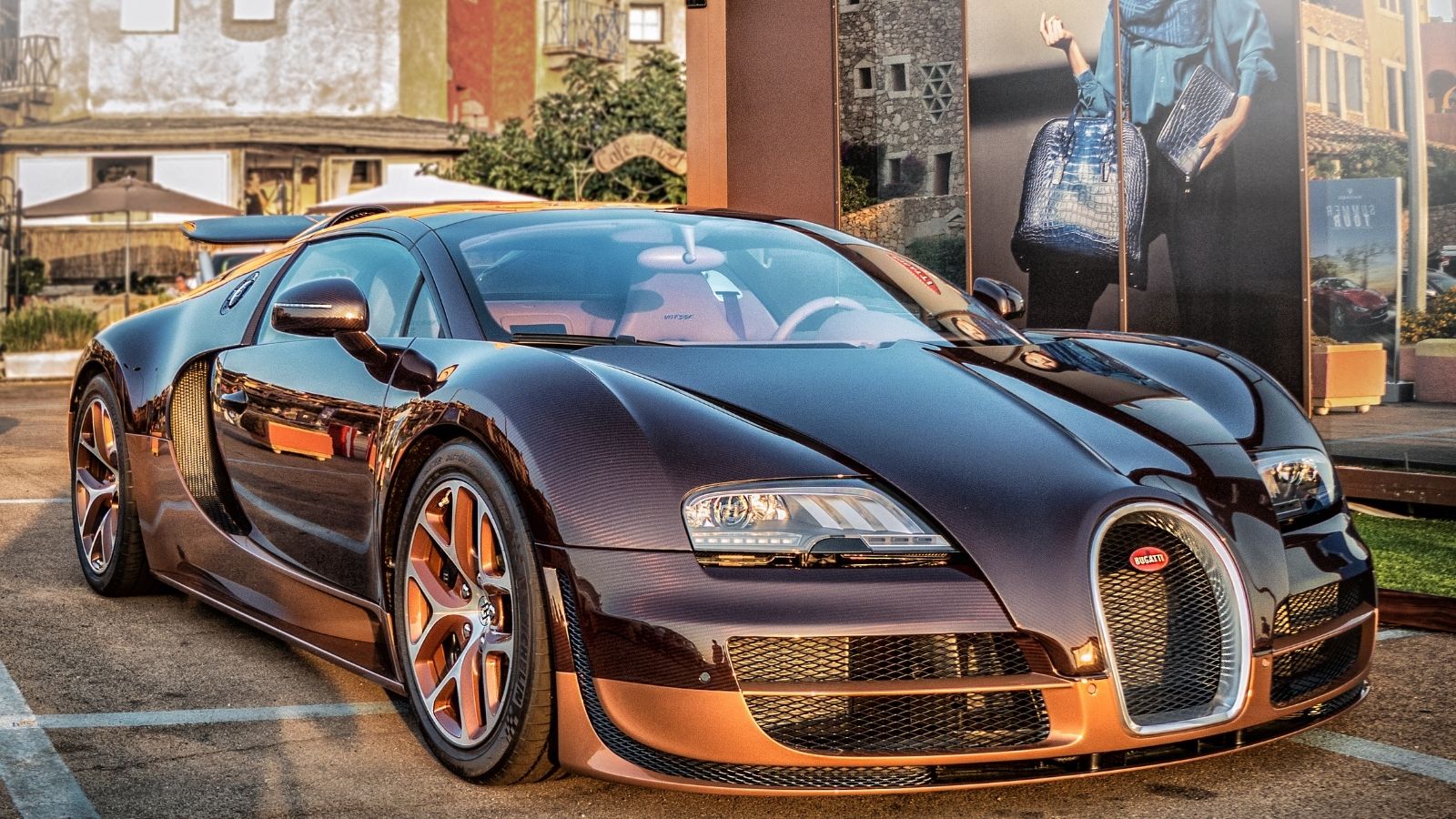
When Volkswagen set out to build the Bugatti Veyron, they aimed to create the fastest car in the world and succeeded almost too well. Designed by Jozef Kabaň, the Veyron packed an 8.0-liter quad-turbocharged W16 engine producing 1,001 horsepower. Its luxurious interior included plush leather, a minimalist dashboard, and a speedometer that went up to 280 mph because why not? The Veyron hit 0-60 mph in just 2.5 seconds, but most owners rarely pushed it that hard, thanks to its eye-watering $3 million price tag and $20,000 tire replacements.
Hennessey Venom GT (2011-2017)
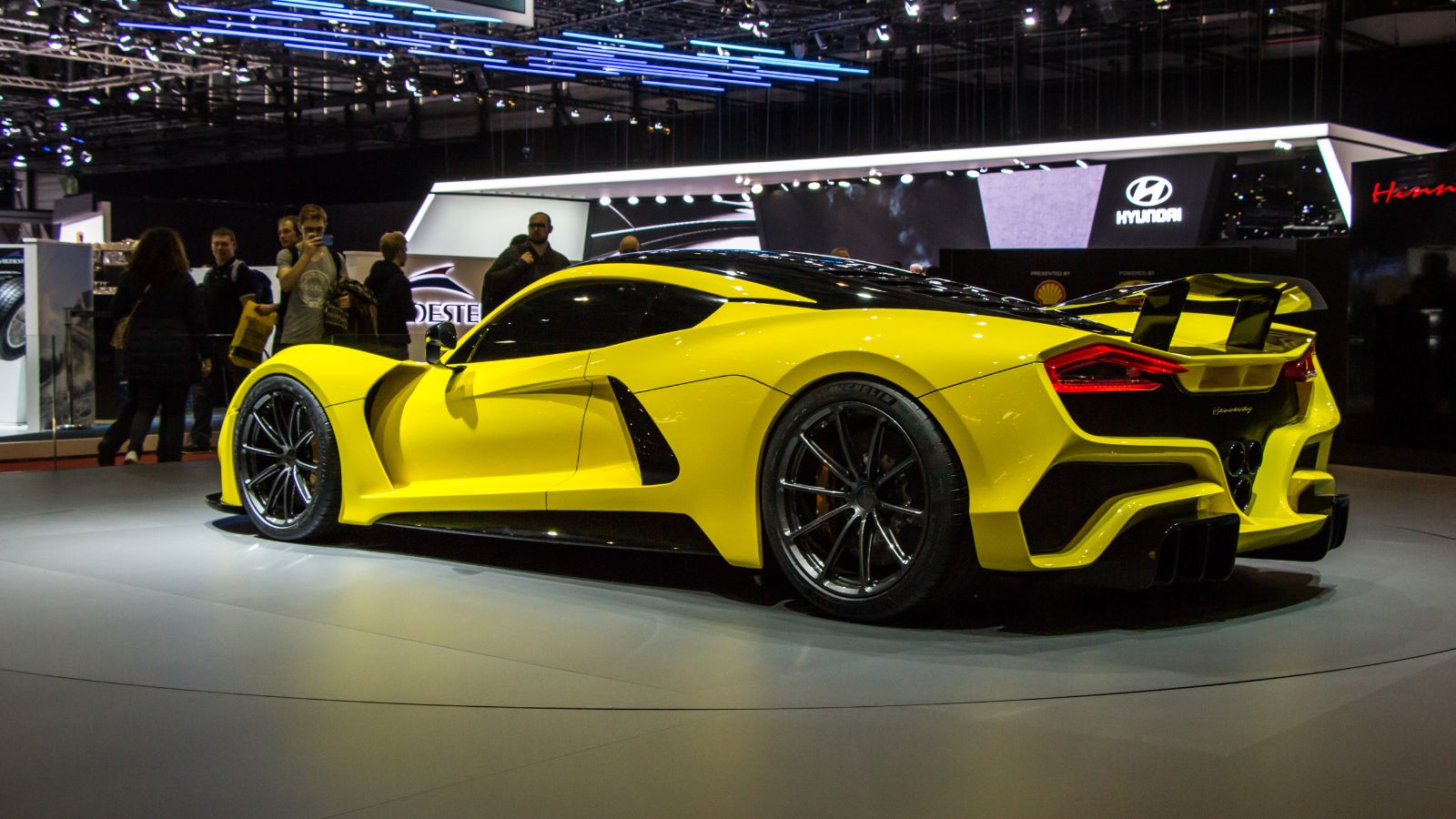
John Hennessey didn’t build the Venom GT for the faint of heart. Based on the Lotus Exige but heavily modified, it featured a 7.0-liter twin-turbocharged V8 producing 1,244 horsepower. The spartan interior retained Lotus’s basic design but added lightweight materials and sports seats. Weighing just 2,743 pounds, the Venom GT rocketed from 0-60 mph in 2.7 seconds and achieved a top speed of 270 mph.
Koenigsegg Regera (2016-Present)
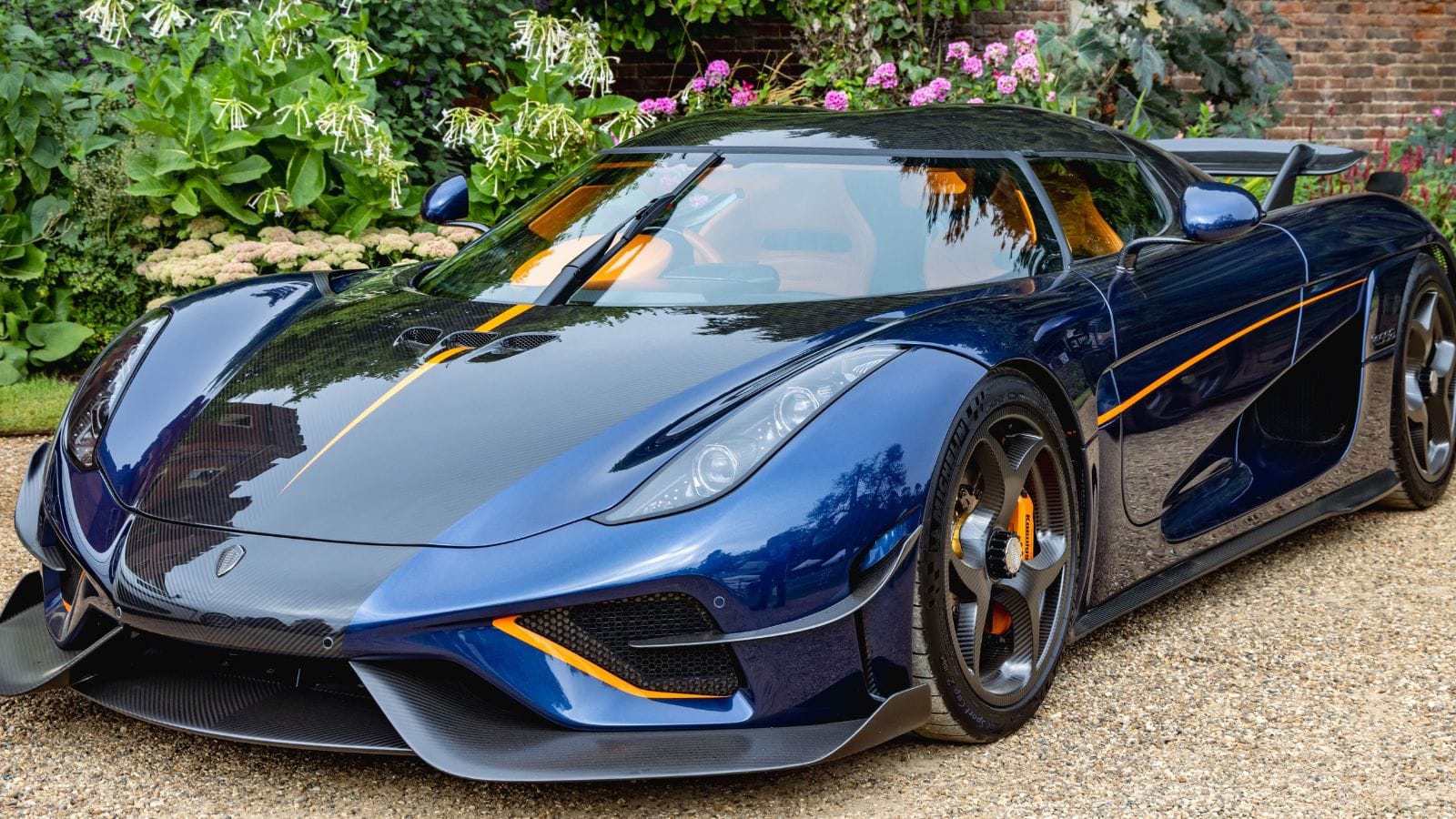
Sweden’s Koenigsegg Regera is what happens when cutting-edge engineering meets absurd power. Designed by Christian von Koenigsegg himself, it features a hybrid powertrain with a twin-turbo 5.0-liter V8 and three electric motors, producing a combined 1,500 horsepower. The ultra-luxurious interior has leather-wrapped surfaces, carbon fiber accents, and a large touchscreen. It ditches a traditional gearbox for a direct-drive system, enabling a 0-60 mph sprint in 2.8 seconds and a mind-blowing 0-250 mph in under 20 seconds.
Ferrari F50 (1995-1997)

The Ferrari F50 was essentially an F1 car for the streets, and it didn’t try to hide it. Designed by Pietro Camardella and Lorenzo Ramaciotti, it featured a 4.7-liter naturally aspirated V12 derived directly from Ferrari’s 1990 Formula 1 car, churning out 513 horsepower. The interior was raw and purpose-driven, with carbon fiber everywhere, minimalist controls, and no power-assisted steering or brakes. It could sprint from 0-60 mph in just 3.7 seconds.
Shelby Cobra 427 (1965-1967)
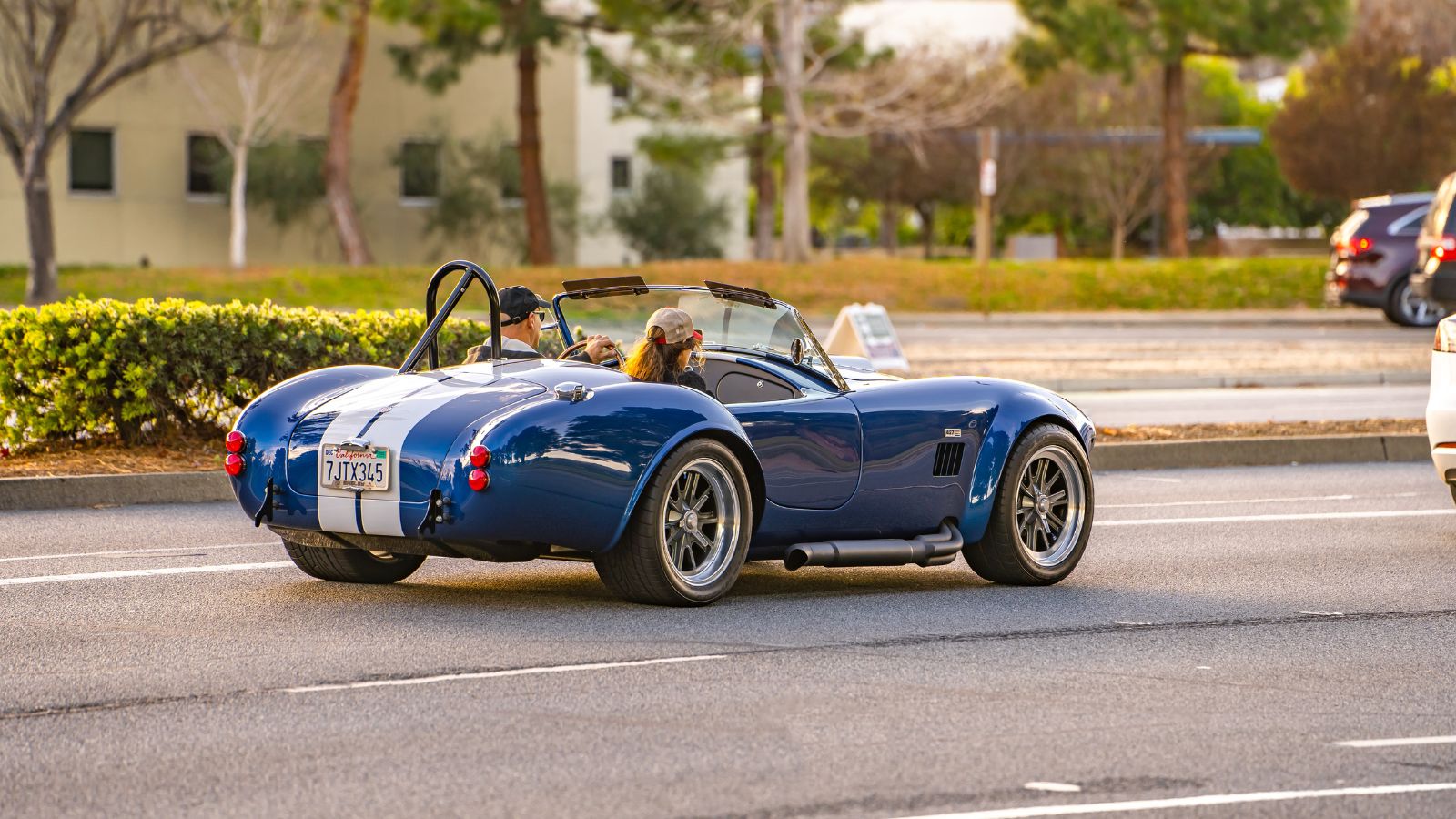
When Carroll Shelby decided to cram a massive 7.0-liter (427 cubic-inch) V8 into the lightweight AC Cobra, the result was pure insanity. The Shelby Cobra 427 produced 425 horsepower in a car weighing just over 2,300 pounds, making it borderline uncontrollable at high speeds. Its spartan interior featured only the most straightforward leather seats, essential gauges, and a thinly profiled steering wheel, which offered little assistance in taming this wild ride. Capable of blasting from 0-60 mph in around 4.2 seconds and lightning-fast for its time, the Cobra was infamous for its tail-happy behavior, demanding extreme caution from drivers.
Lamborghini Diablo VT (1990-2001)
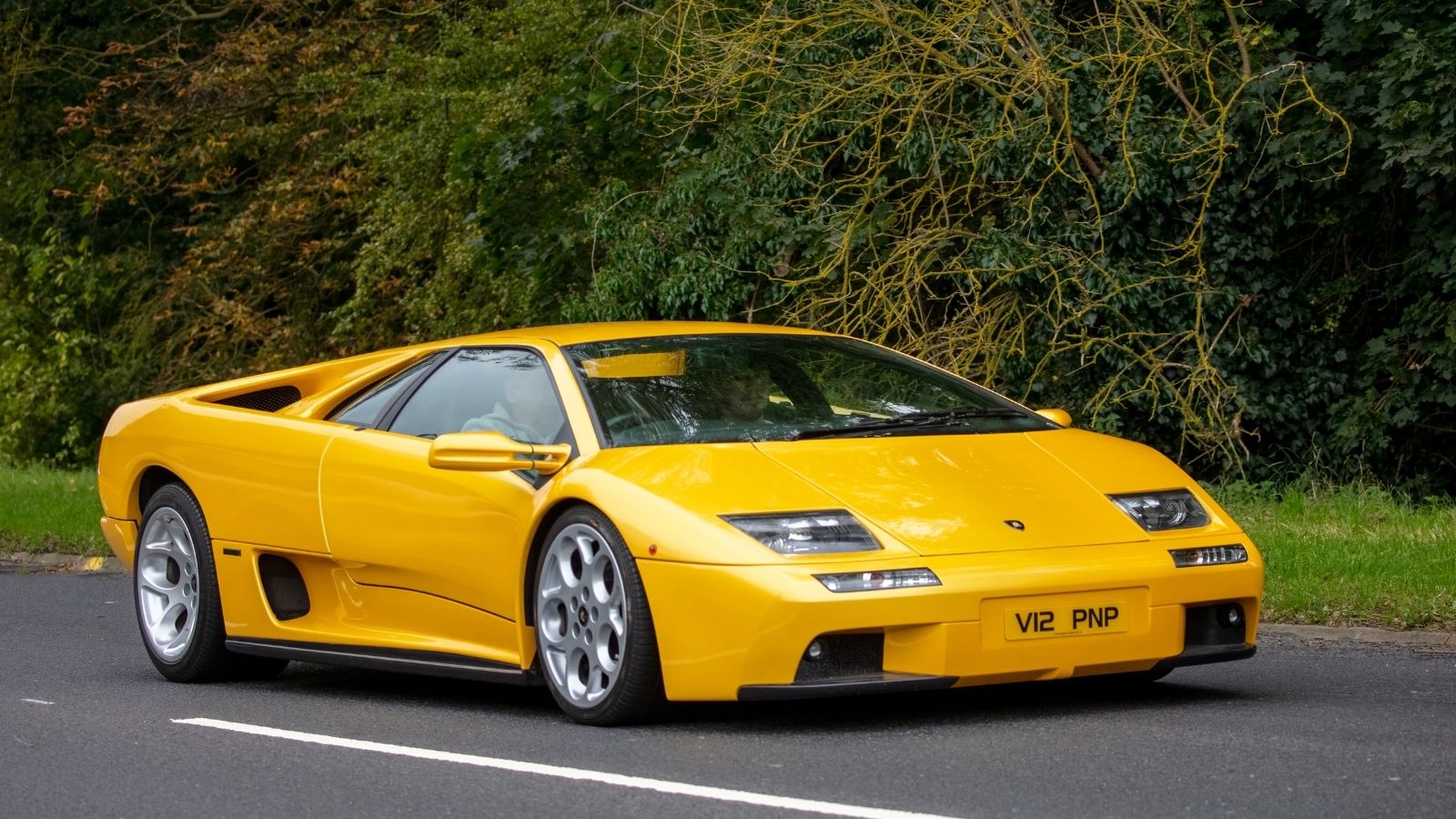
Created by Marcello Gandini, the Lamborghini Diablo was the quintessential poster car of the ’90s, and the VT version took it to the next level. Under the hood was a 5.7-liter V12 producing 492 horsepower with all-wheel drive. The interior was pure Italian luxury: Hand-stitched leather seats, a fighter jet-style dashboard, and that iconic gated shifter. The Diablo VT rocketed from 0-60 mph in just 4 seconds, but its lack of modern driver aids and unpredictable handling made it a handful. The Diablo’s raw power and flamboyant design made it a tamed beast in name only.
Ford GT (2005-2006)
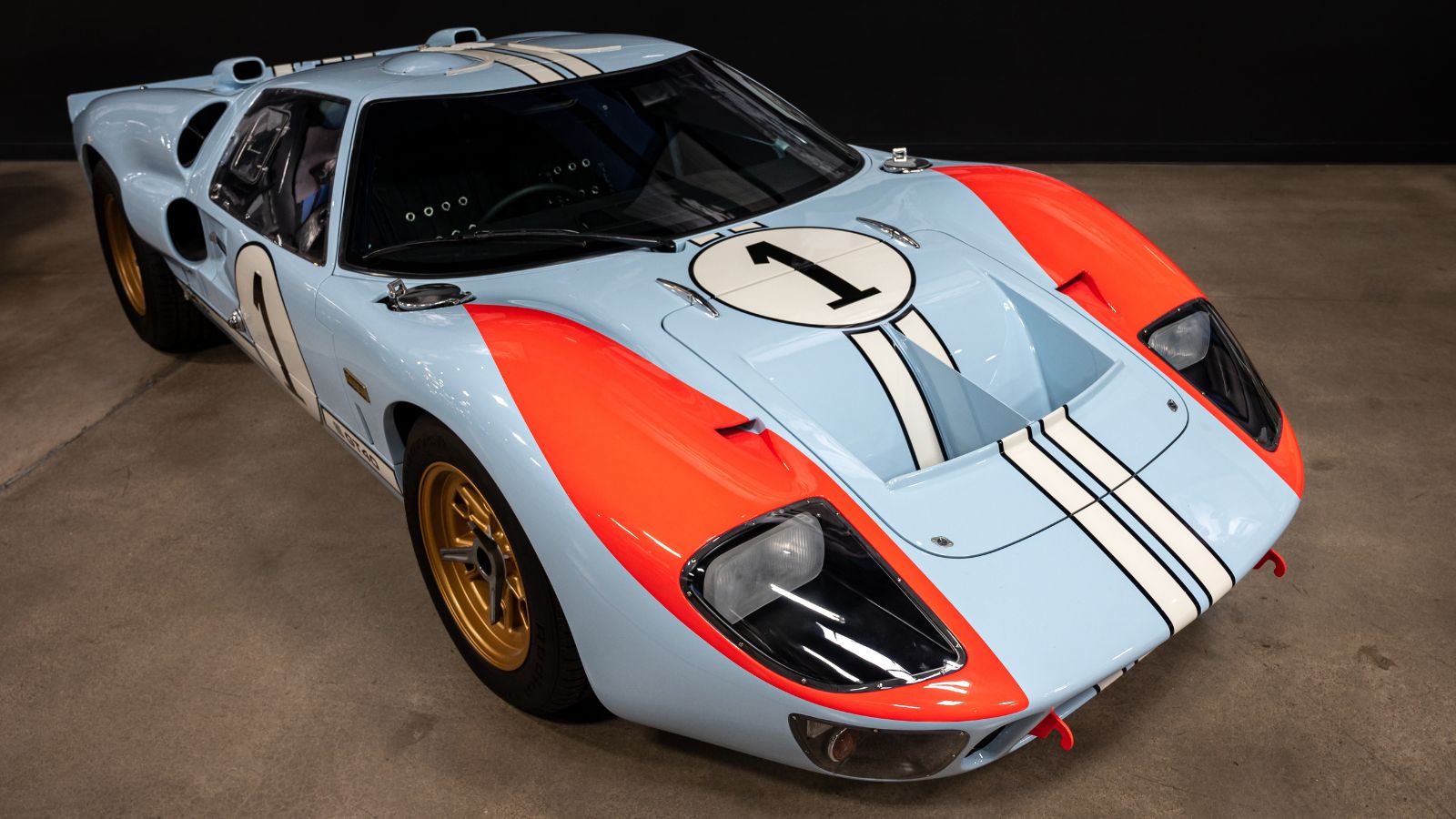
Paying homage to the legendary GT40, the 2005 Ford GT was designed by Camilo Pardo and packed modern muscle into a retro-styled package. Powered by a supercharged 5.4-liter V8 producing 550 horsepower, it delivered jaw-dropping performance. The interior combined vintage inspiration with modern touches: Leather bucket seats, toggle switches, and a minimalist yet refined dashboard. The GT could sprint from 0-60 mph in just 3.3 seconds, but with no traction control or stability assist, it demanded a skilled hand to exploit its potential fully. It was a true throwback to an era when driving skill was the ultimate safety feature.
Porsche 911 GT2 (2001-2005)
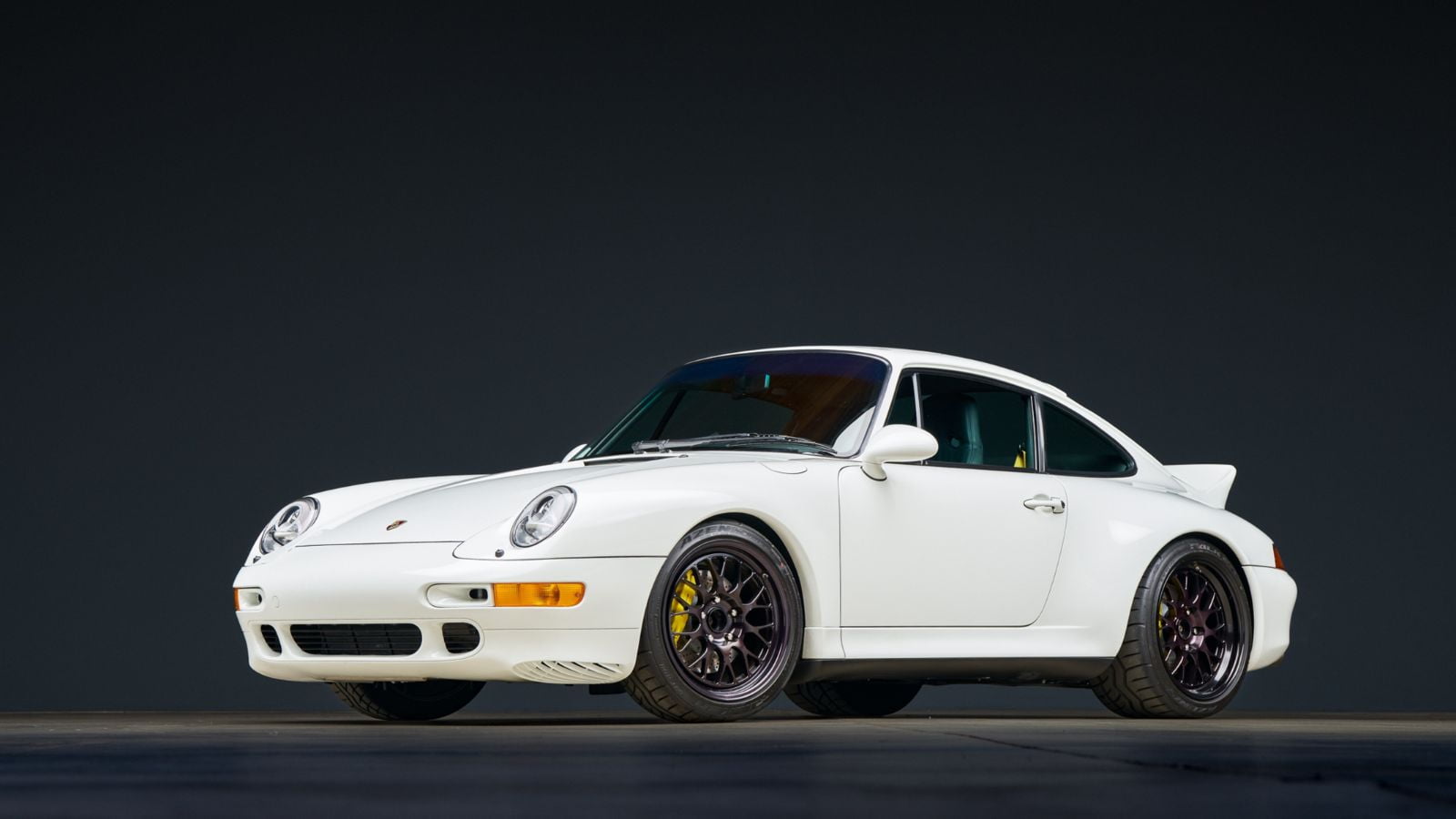
Nicknamed the “Widowmaker,” the 996-generation Porsche 911 GT2 was a rear-engine monster that could turn even the most confident drivers into nervous wrecks. Designed by Harm Lagaay, it featured a twin-turbocharged 3.6-liter flat-six engine producing 456 horsepower, later bumped to 483. The interior was stripped down for performance: Lightweight bucket seats, Alcantara accents, and minimal sound insulation. With a 0-60 mph time of 3.9 seconds, the GT2 was rear-wheel drive only, making it notoriously tail-happy and demanding extreme precision, especially in wet conditions.
Chevrolet Corvette ZR1 (2009-2013)
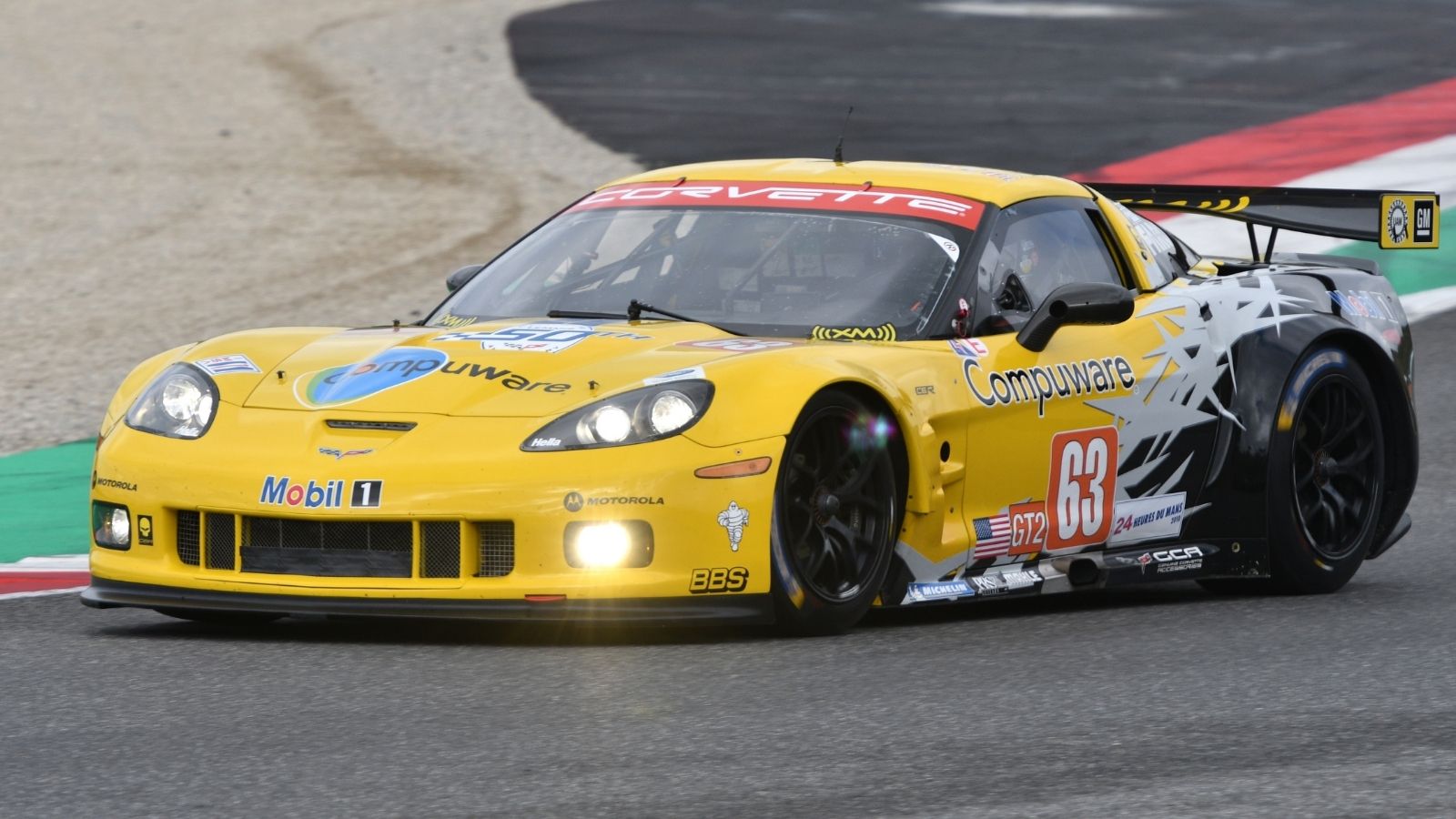
The C6 Corvette ZR1 was Chevrolet’s answer to the world’s best supercars, boasting a supercharged 6.2-liter LS9 V8 that produced 638 horsepower. Designed by Tom Peters, the ZR1 had an aggressive look, complete with a transparent polycarbonate hood window showcasing the monstrous engine. The interior blended luxury and sport, featuring leather seats, carbon fiber trim, and a heads-up display. It could hit 0-60 mph in just 3.4 seconds, but with all that power sent to the rear wheels, it could easily overwhelm its tires, making it a handful for drivers unaccustomed to such raw performance.
Nissan GT-R R35 (2009-Present)
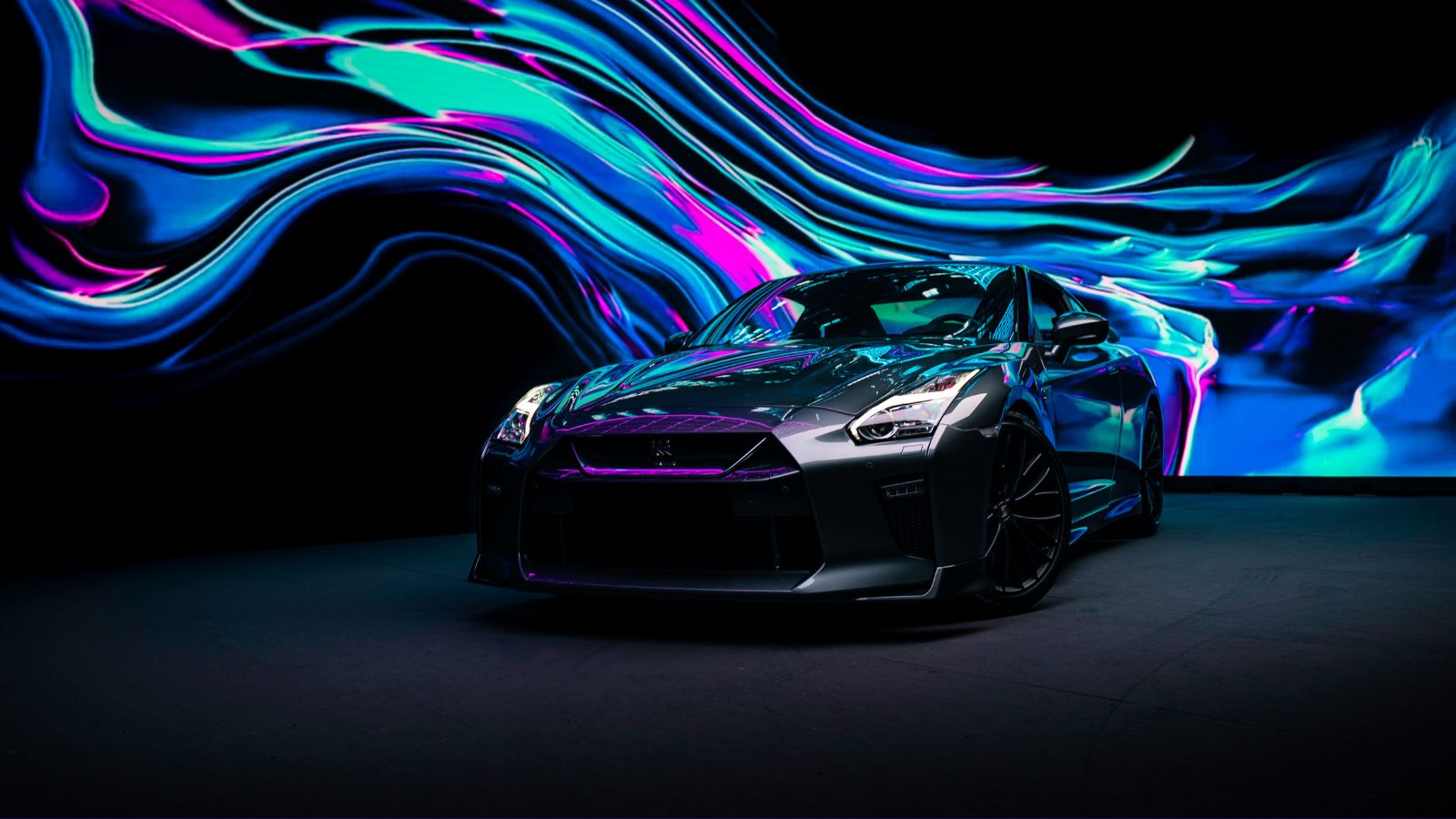
When the Nissan GT-R R35 launched, it redefined the term “accessible supercar.” Shiro Nakamura designed it with a 3.8-liter twin-turbocharged V6 producing 480 horsepower at launch, later boosted to over 600 in NISMO versions. Its tech-heavy interior featured bolstered sports seats, a multifunction display designed with Polyphony Digital (makers of Gran Turismo), and cutting-edge performance tracking. With launch control and all-wheel drive, it could accelerate from 0-60 mph in 2.9 seconds. Despite its sophisticated electronics making it easy to drive quickly, the GT-R retains a wild streak that could surprise drivers.
Mercedes-Benz SLS AMG Black Series (2013-2014)
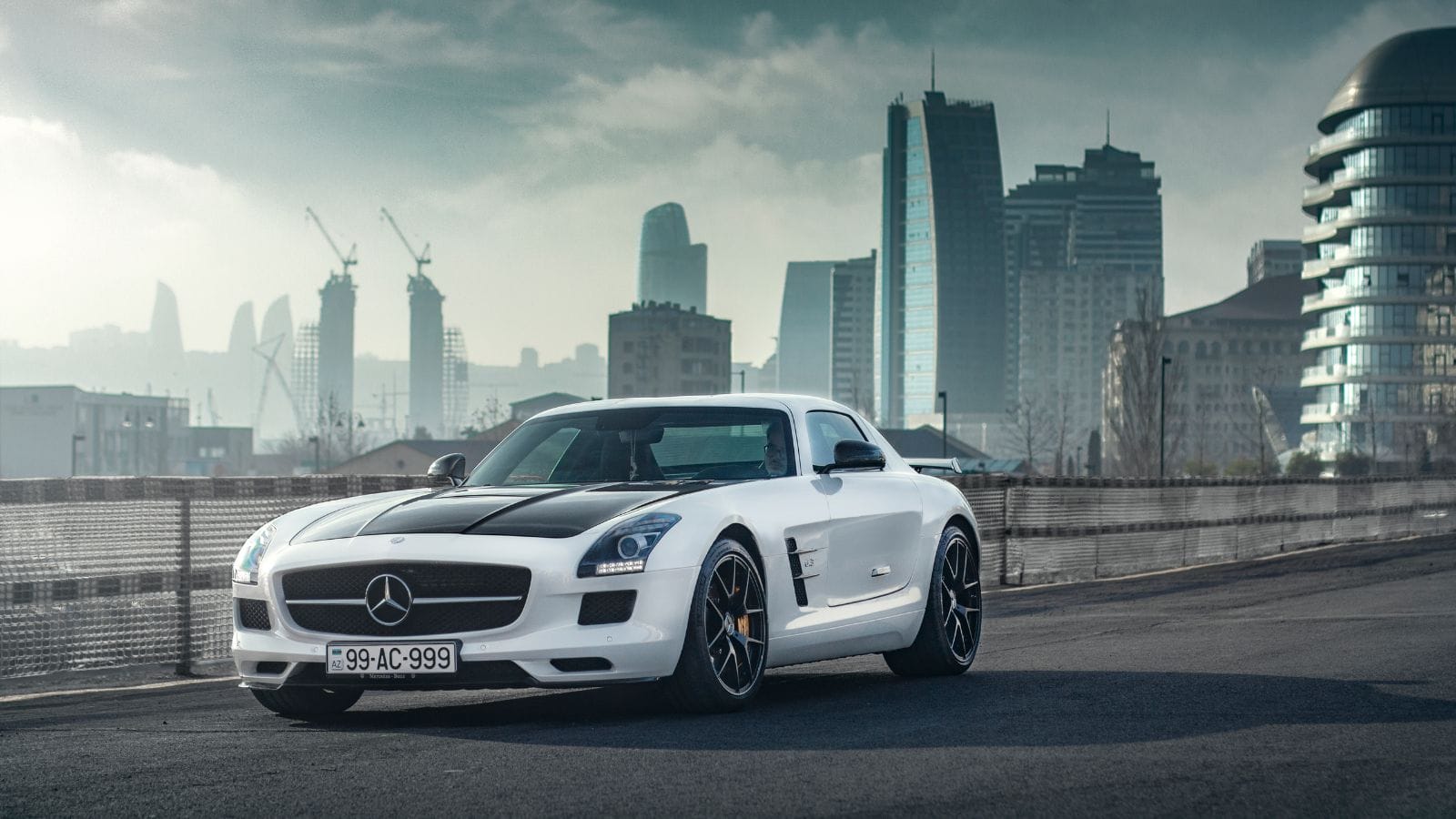
The Mercedes-Benz SLS AMG Black Series was the most untamed iteration of an already ferocious vehicle. Created by Mark Fetherston, it took the legendary gullwing SLS and gave it an extreme performance boost. Under the hood was a naturally aspirated 6.2-liter V8, tuned to deliver 622 horsepower, paired with a lightning-quick dual-clutch transmission. The interior was stripped bare for performance: Carbon fiber panels, Alcantara-wrapped racing seats, and minimal sound insulation created a race-ready cockpit. It could sprint from 0-60 mph in just 3.5 seconds, but its rear-wheel-drive layout and aggressive tuning meant it was more than happy to slide with even a slight throttle nudge.
TVR Sagaris (2005-2006)
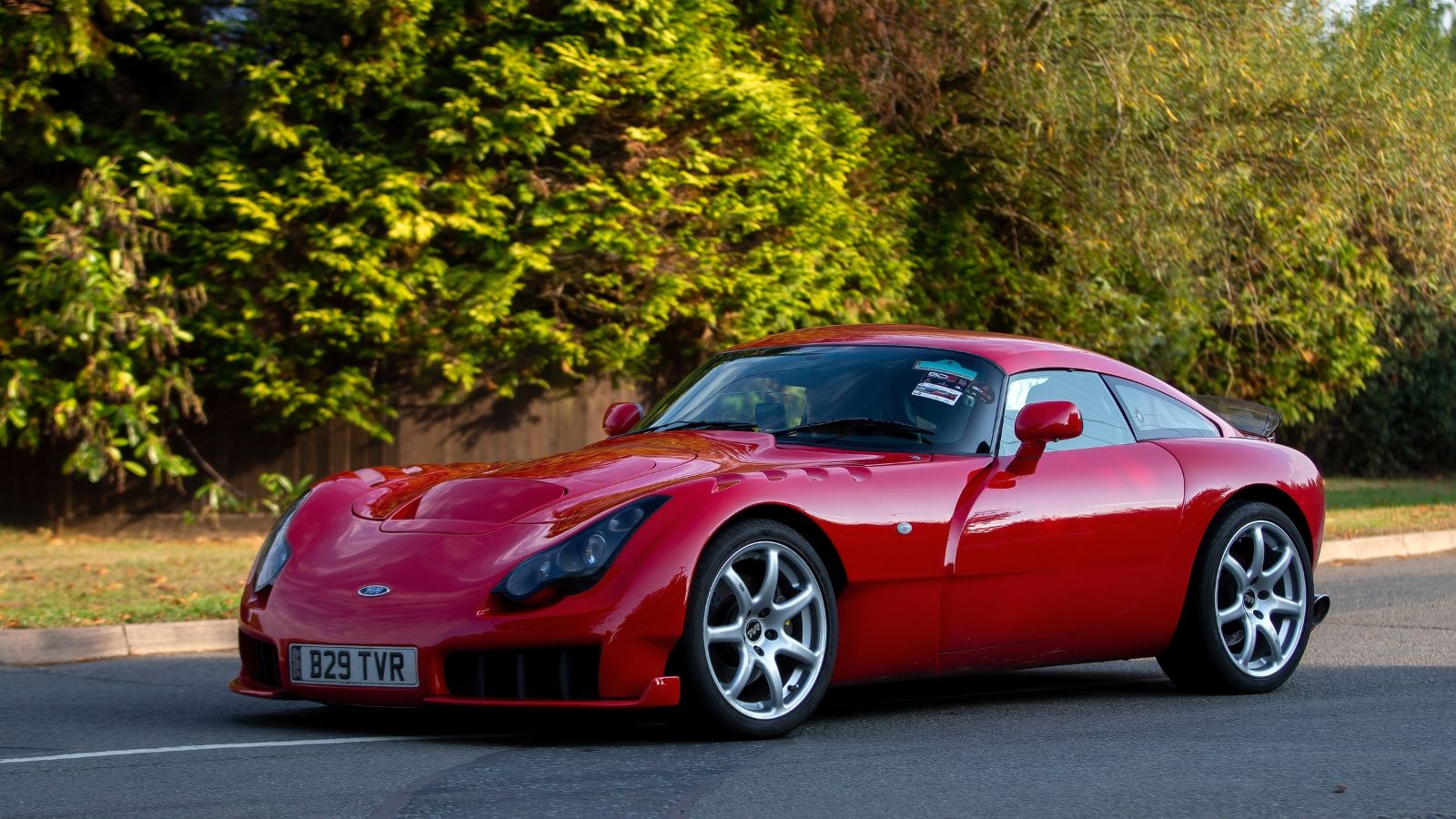
The TVR Sagaris was the ultimate British bad boy, with insane power, zero driver aids, and a look that screamed chaos. Designed by Graham Browne, it came with a 4.0-liter straight-six engine producing 400 horsepower, all sent to the rear wheels with no traction control or ABS. The interior was quirky and minimalist, featuring bespoke dials, leather seats, and exposed carbon fiber, but it offered little comfort or safety. With a 0-60 mph time of 3.7 seconds, the Sagaris was brutally fast yet unforgiving, earning a reputation as a car that could instantly turn on its driver.
Lotus Exige Cup 430 (2017-Present)
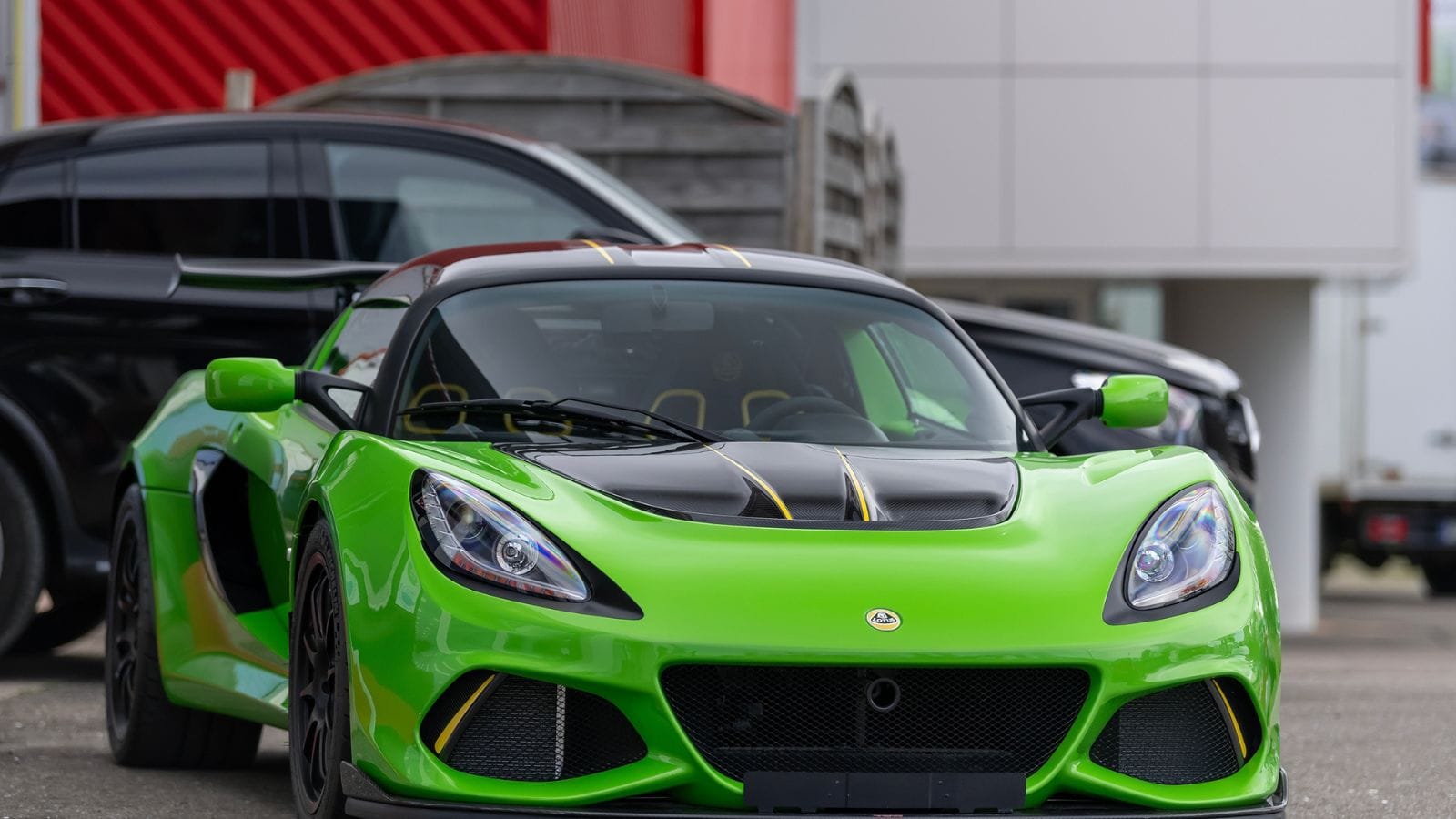
The Lotus Exige Cup 430 is a track-focused missile designed to test both the car and the driver. It is designed by Russell Carr and features a supercharged 3.5-liter V6 producing 430 horsepower in a car weighing just 2,328 pounds. The interior is pure function over form: Lightweight carbon fiber seats, a minimalist dashboard, and exposed aluminum everywhere. With a 0-60 mph time of 3.2 seconds, the Exige Cup 430 is blindingly quick, but its lack of modern driver assists means it demands constant attention and precision.
McLaren P1 (2013-2015)
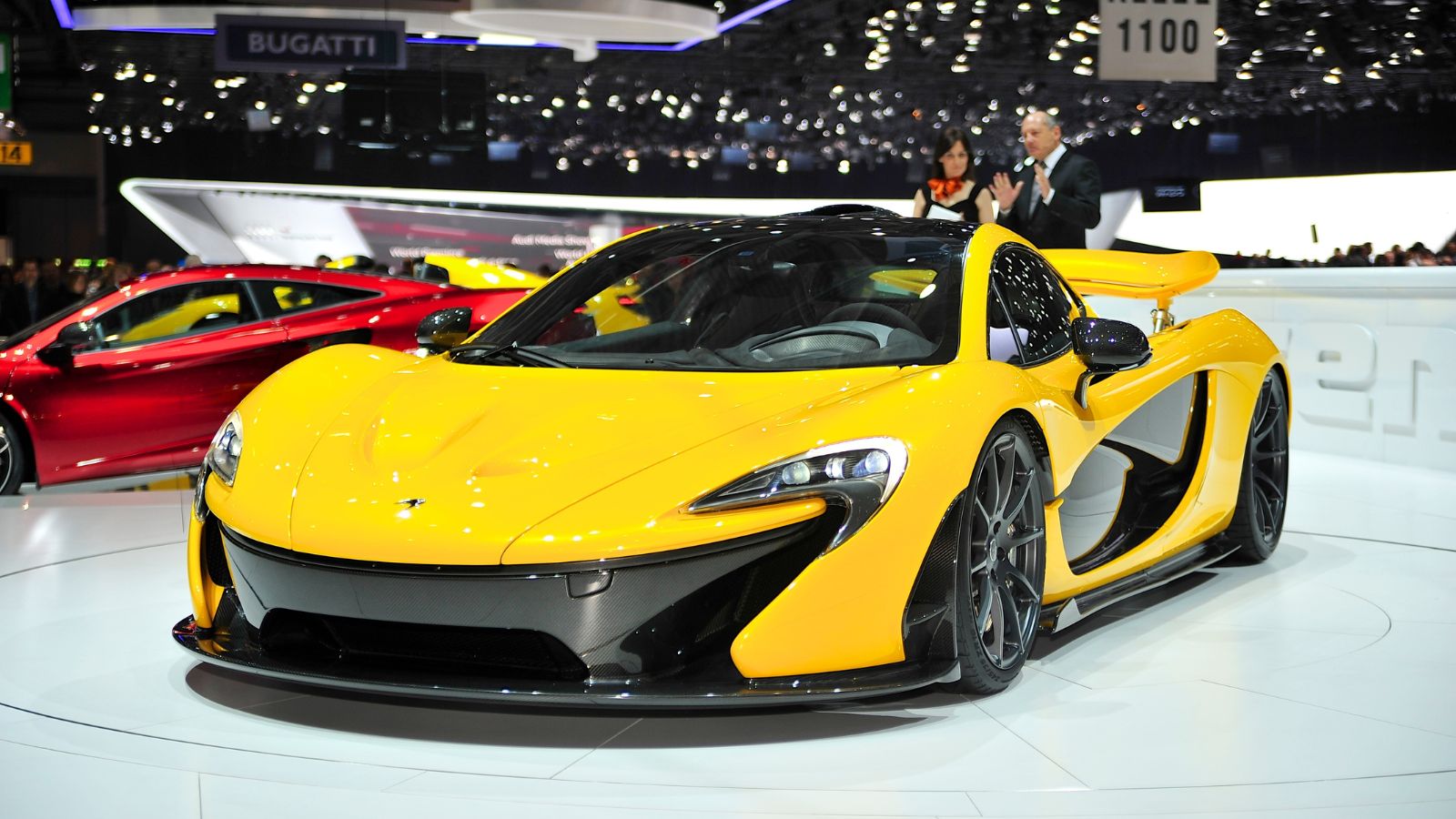
McLaren’s P1 was part of the hypercar holy trinity and possibly the most feral of the bunch. Designed by Frank Stephenson, it combined a 3.8-liter twin-turbo V8 with an electric motor for a total output of 903 horsepower. The interior was a carbon fiber masterpiece, featuring racing seats, a minimalist dashboard, and just enough creature comforts to remind you it was technically road-legal. The P1 could hit 0-60 mph in 2.6 seconds and had a “Race Mode” that lowered the suspension and activated an enormous rear wing. Even experienced drivers found it a challenge to exploit its capabilities fully.
Dodge Viper ACR (2016-2017)
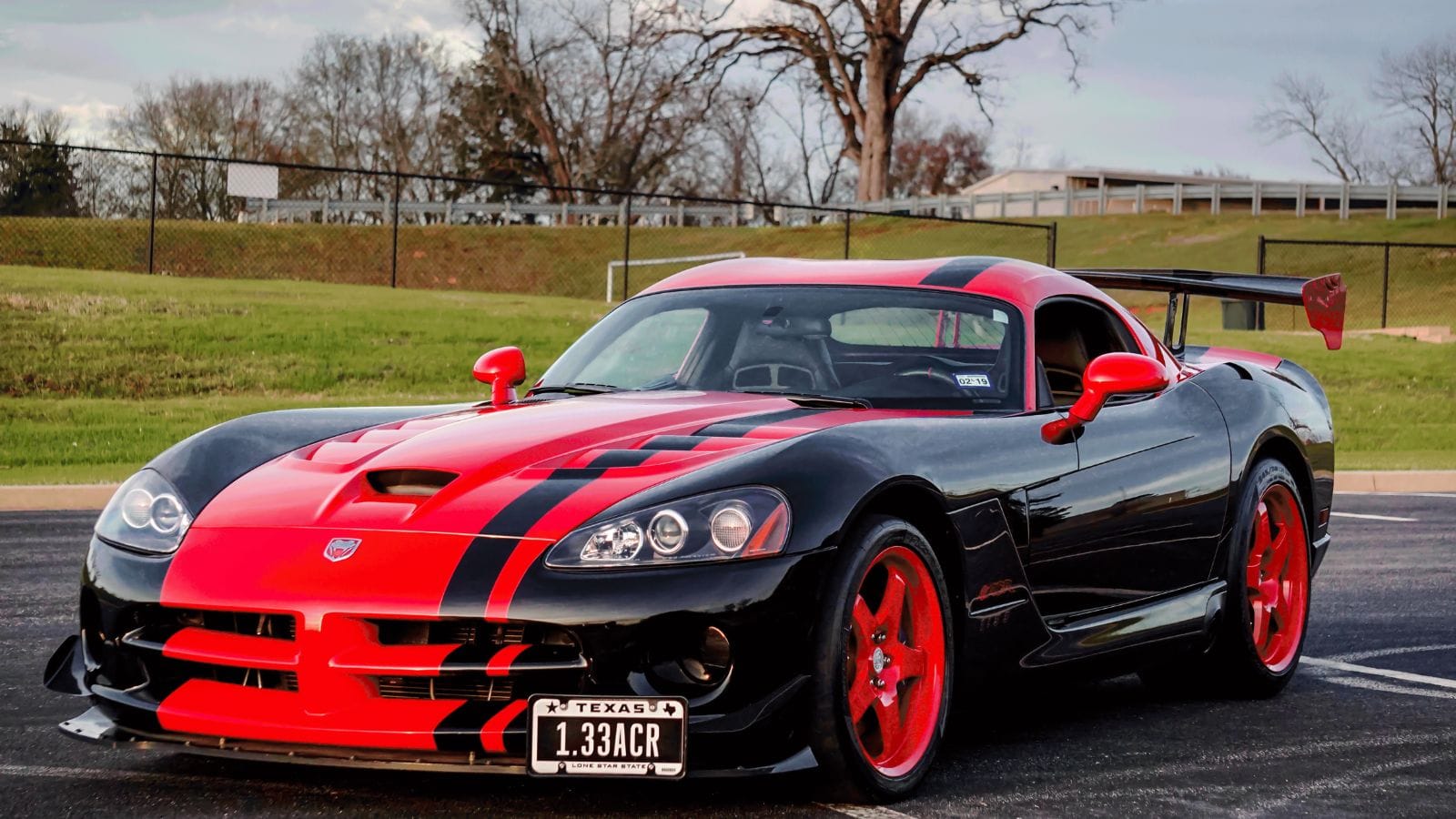
The Dodge Viper ACR was the ultimate expression of American muscle, blended with track-focused precision. Designed by Ralph Gilles, it housed an 8.4-liter V10 engine pumping out 645 horsepower. The interior was a no-nonsense affair, with racing seats, Alcantara trim, and exposed carbon fiber focused on reducing weight and keeping the driver locked in place. With a 0-60 mph time of 3.3 seconds and an aero package that produced insane downforce, the Viper ACR was a track monster. However, on the street, it was a handful.
Ferrari 812 Superfast (2017-Present)
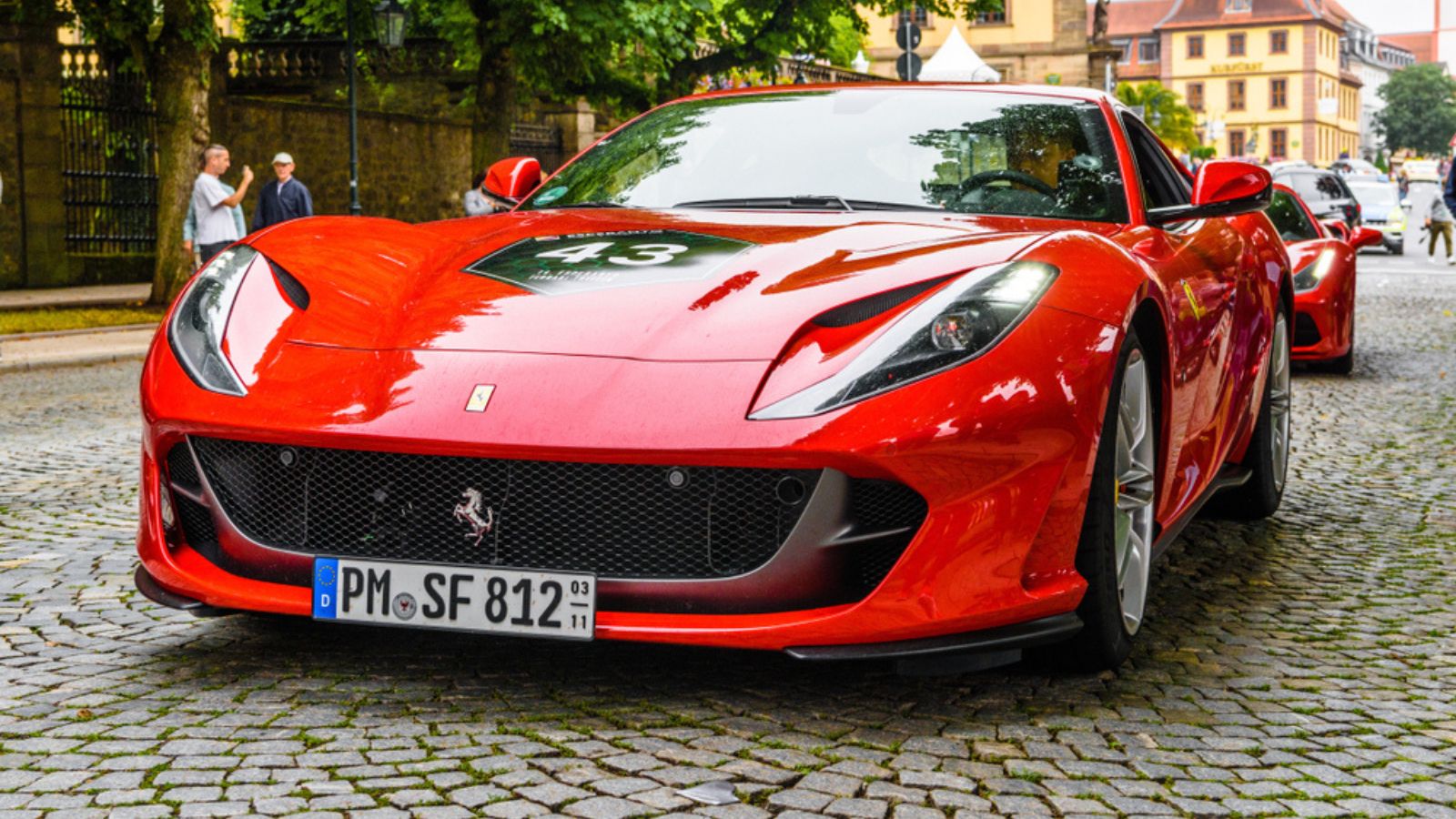
The Ferrari 812 Superfast lives up to its name. Designed by Flavio Manzoni, it features a naturally aspirated 6.5-liter V12 that produces a mind-blowing 789 horsepower. The luxurious interior blends leather, Alcantara, and carbon fiber with a driver-focused cockpit and digital displays. It rockets from 0 to 60 mph in just 2.8 seconds, but its rear-wheel-drive layout and aggressive power delivery can make it a handful at the limit. Ferrari’s electronic aids help tame the beast, but the 812 becomes a wild ride with them switched off.
Pagani Huayra BC (2016-Present)
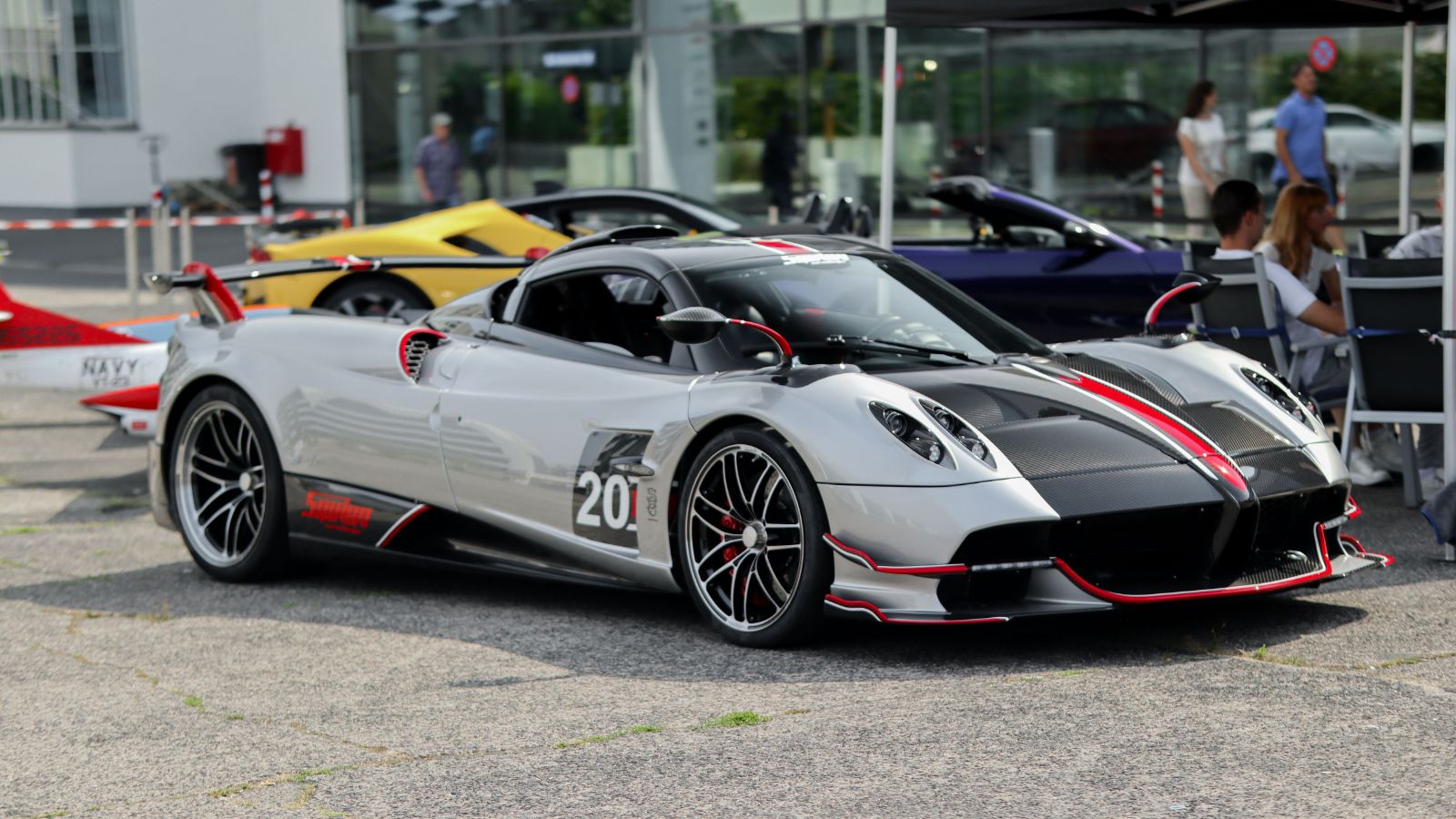
The Pagani Huayra BC is a rolling piece of art. Designed by Horacio Pagani, it’s powered by a 6.0-liter twin-turbo V12 from AMG, producing 789 horsepower. The interior is a handcrafted masterpiece, featuring leather, carbon fiber, and billet aluminum components that look more like jewelry than car parts. Weighing 2,685 pounds, the Huayra BC hits 0-60 mph in 2.8 seconds and delivers razor-sharp handling.
Jaguar XJ220 (1992-1994)
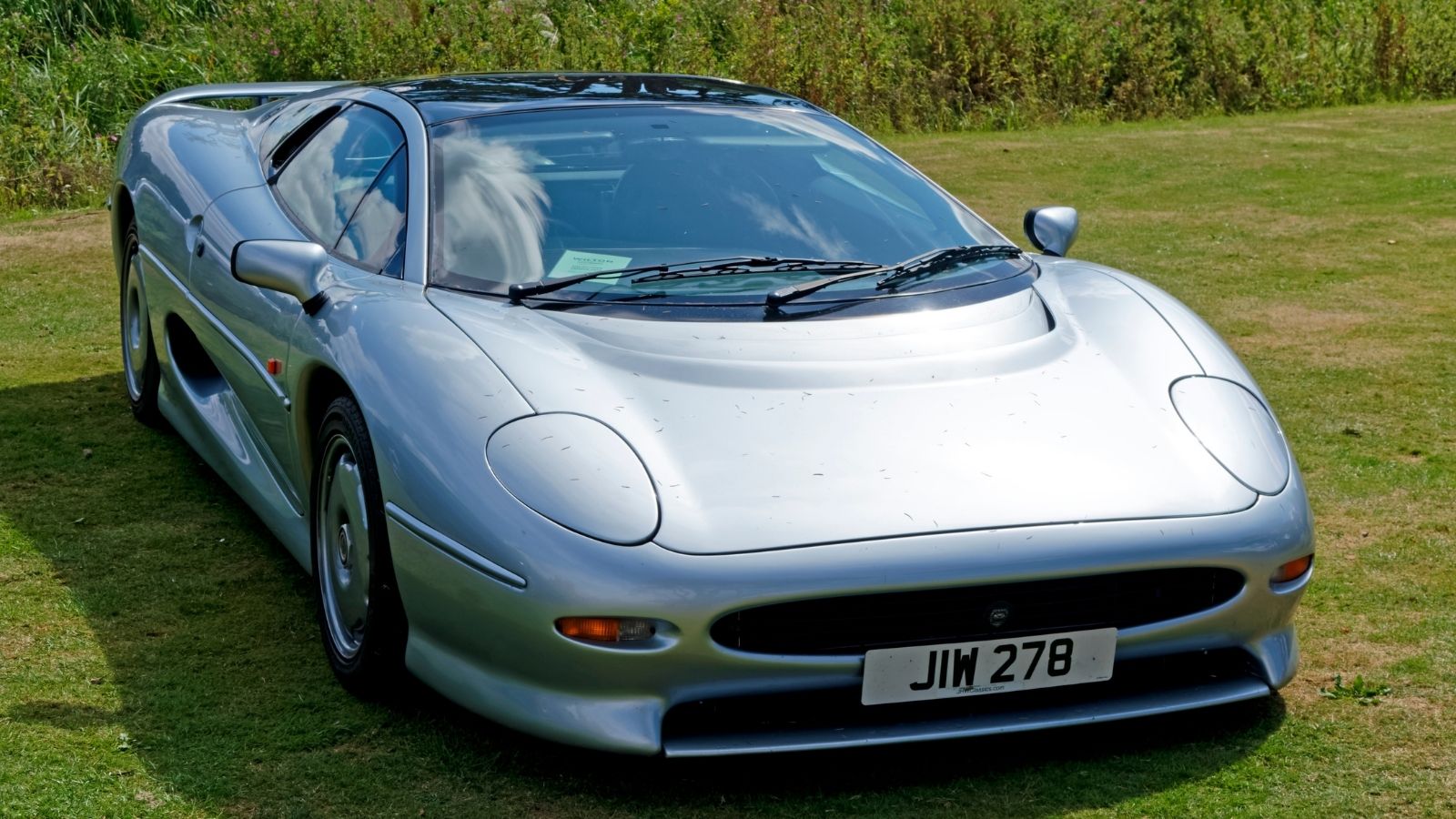
The Jaguar XJ220 was the fastest car of its time and one of the most misunderstood. Initially promised with an all-wheel-drive V12, the production model instead featured a 3.5-liter twin-turbo V6 and rear-wheel drive. Nevertheless, it delivered 542 horsepower and could reach an astonishing 213 mph, making it the world’s fastest production car at the time. Designed by Keith Helfet, the XJ220 had an ultra-low, sleek body, though its sheer size made it intimidating on narrow roads. The interior was pure ’90s luxury: Leather seats, wood trim, and analog gauges. Despite its speed, the XJ220 was notoriously difficult to handle at high velocities.
Koenigsegg CCX (2006-2010)
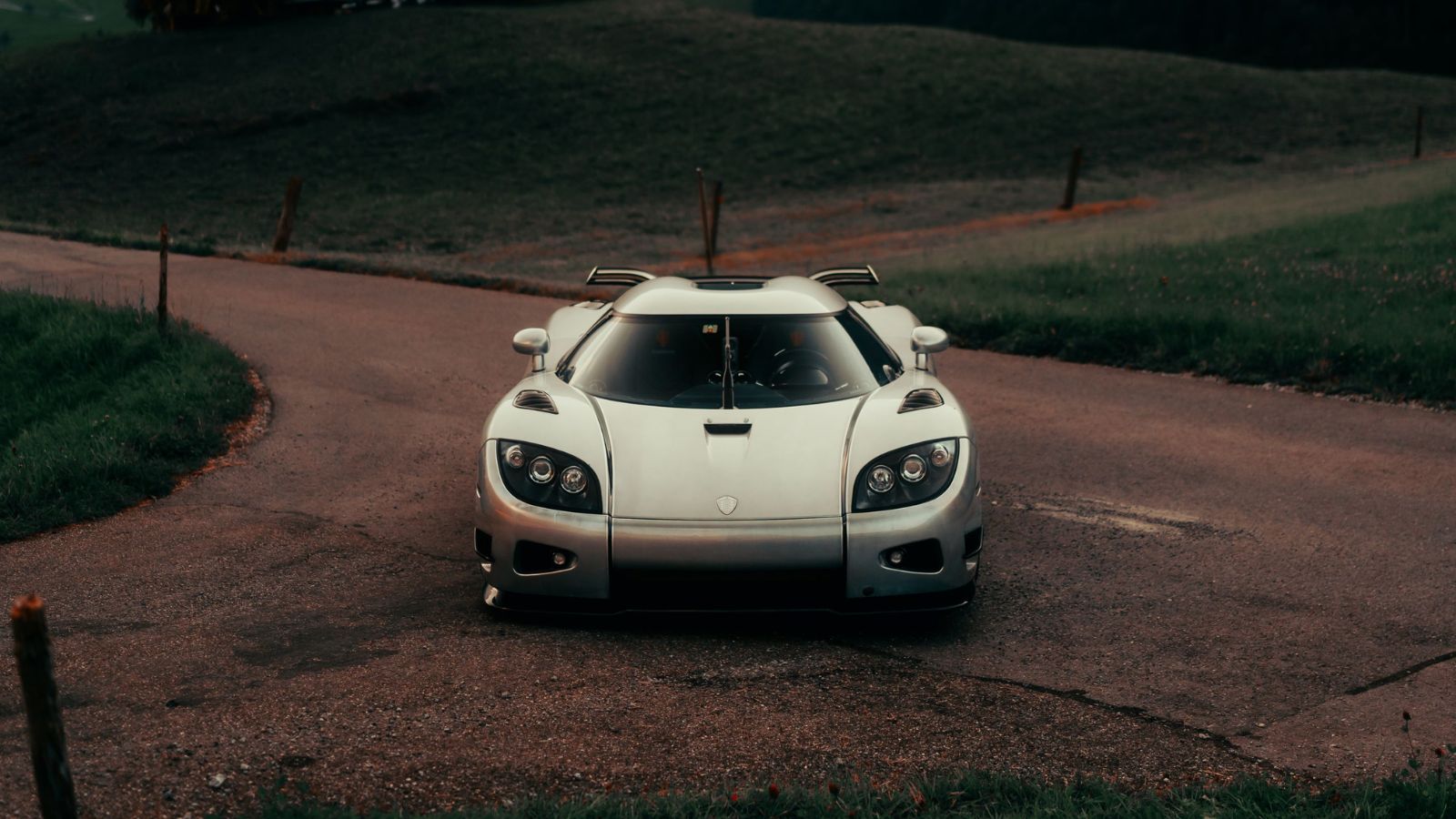
The Koenigsegg CCX was Sweden’s answer to the hypercar world: A lightweight, brutally powerful machine without interest in being “user-friendly.” Christian von Koenigsegg designed the CCX packed a 4.7-liter twin-supercharged V8 that produced 806 horsepower. The carbon-fiber interior was minimalist but functional, featuring racing seats and a unique, fighter-jet-inspired steering wheel. With a 0-60 mph time of 3.2 seconds and a top speed exceeding 240 mph, the CCX was blisteringly fast. However, it lacked the advanced traction control systems found in its rivals, making it a car that demanded serious skill, especially after The Stig famously spun it off the Top Gear track.
Dodge Challenger SRT Demon (2018)

The Dodge Challenger SRT Demon was built to dominate the drag strip. Under the hood lurked a supercharged 6.2-liter HEMI V8, producing a staggering 840 horsepower on race fuel. Designed to be street-legal yet track-ready, the Demon came with skinny front tires (in drag spec), a transbrake, and a launch control system that made wheelies possible right out of the dealership. The interior was minimalist, with only a standard driver’s seat (passenger and rear seats were optional). It accelerated from 0-60 mph in an absurd 2.3 seconds, but with all that torque, it was a handful on normal roads.
Bugatti Chiron (2016-Present)
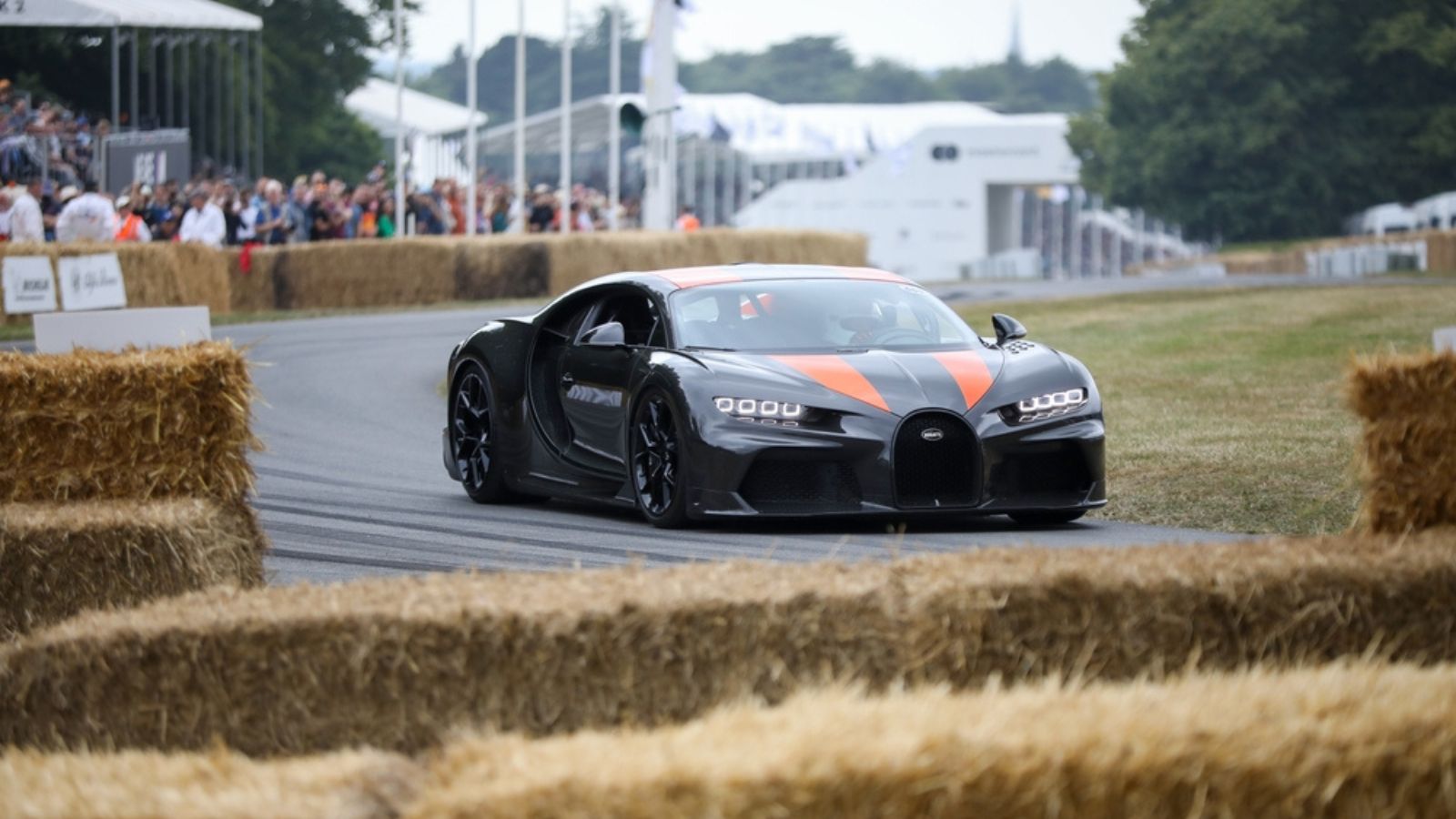
The Bugatti Chiron set new standards for excess in the world of hypercars. Propelled by an 8.0-liter quad-turbo W16 engine producing a brain-bending 1,479 horsepower, it could accelerate from 0-60 mph in just 2.4 seconds and reach a top speed of 261 mph. Created by Achim Anscheidt, the Chiron combined brute power with lavish luxury: Leather, carbon fiber, and polished aluminum enveloped in a capsule that could outrun almost anything. While its all-wheel-drive system and advanced electronics helped keep it under control, the Chiron’s sheer velocity meant that even the slightest mistake at triple-digit speeds could have catastrophic consequences.
Lancia Delta S4 (1985-1986)
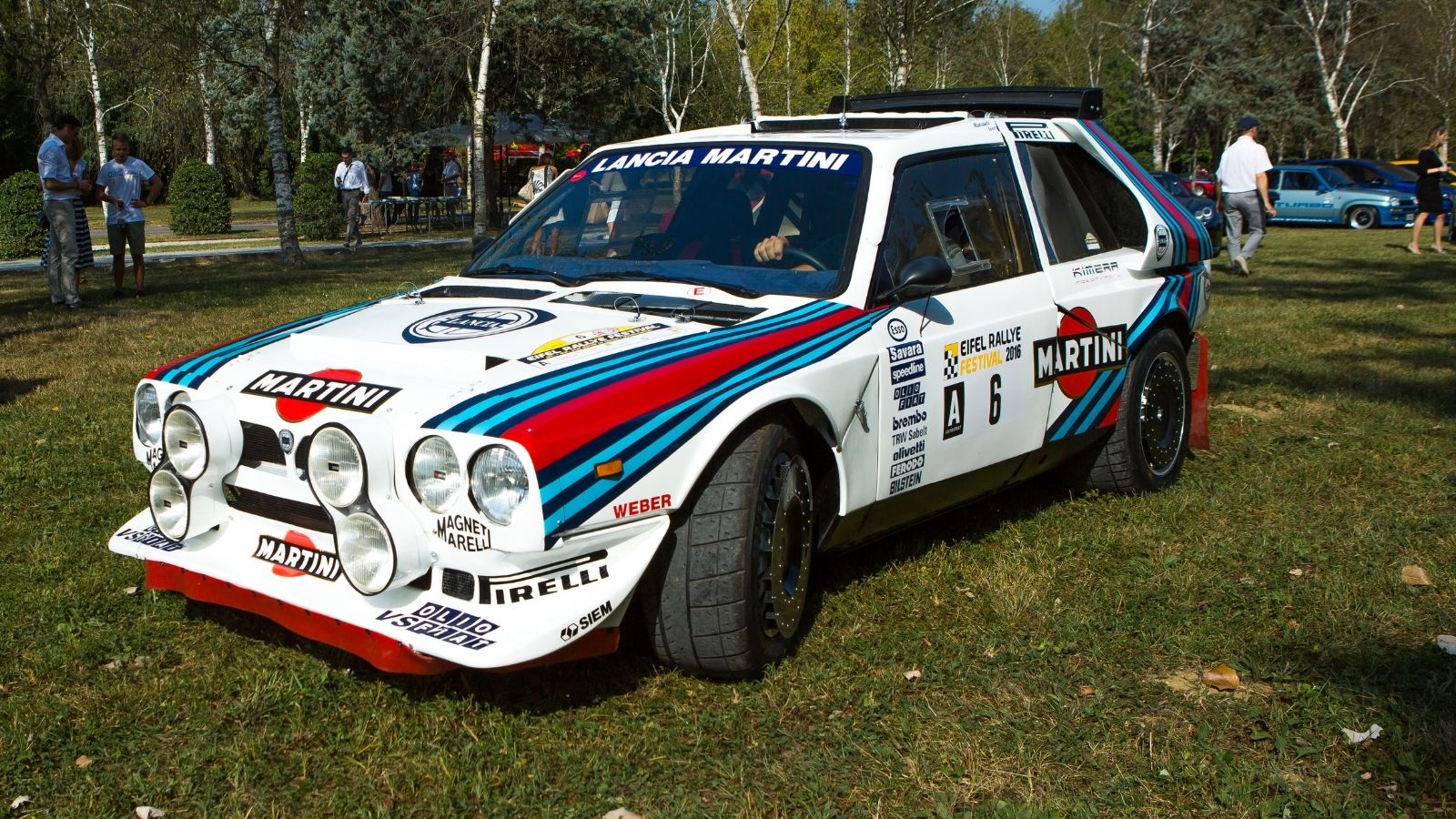
The Lancia Delta S4 was a Group B rally beast with little business on the open road. Featuring both a supercharger and a turbocharger, its 1.8-liter inline-four engine could produce up to 500 horsepower in competition trim. Designed by Abarth, the road-going Stradale version was slightly tamer, with around 250 horsepower. Its boxy, aggressive design was paired with all-wheel drive, though its lightweight frame made it prone to oversteering and sudden power surges. The spartan interior had just enough creature comforts to meet homologation requirements. The Delta S4 became infamous for its unpredictability and brutal danger.
Hennessey Venom GT (2011-2017)

The Hennessey Venom GT was Frankensteinian in make: A greatly altered Lotus Exige chassis filled with a 7.0-liter twin-turbo V8 pumping out 1,244 horsepower. Built exclusively for speed, it broke records with a reported top speed of 270.49 mph (although not officially verified due to testing regulations). The interior was Spartan, taking much from its Lotus heritage, but with the addition of leather and carbon fiber to remind you that it wasn’t a kit car. With a 0-60 mph in 2.7 seconds and rear-wheel drive, the Venom GT was vicious and almost impossible to handle at full speed.
25 Facts About Car Loans That Most Drivers Don’t Realize

Car loans are one of the most common ways people fund car purchases. Like any other kind of loan, car loans can have certain features that can be regarded as an advantage or a disadvantage to the borrower. Understanding all essential facts about car loans and how they work to ensure that you get the best deal for your financial situation is essential. Here are 25 shocking facts about car loans that most drivers don’t realize:
25 Facts About Car Loans That Most Drivers Don’t Realize
